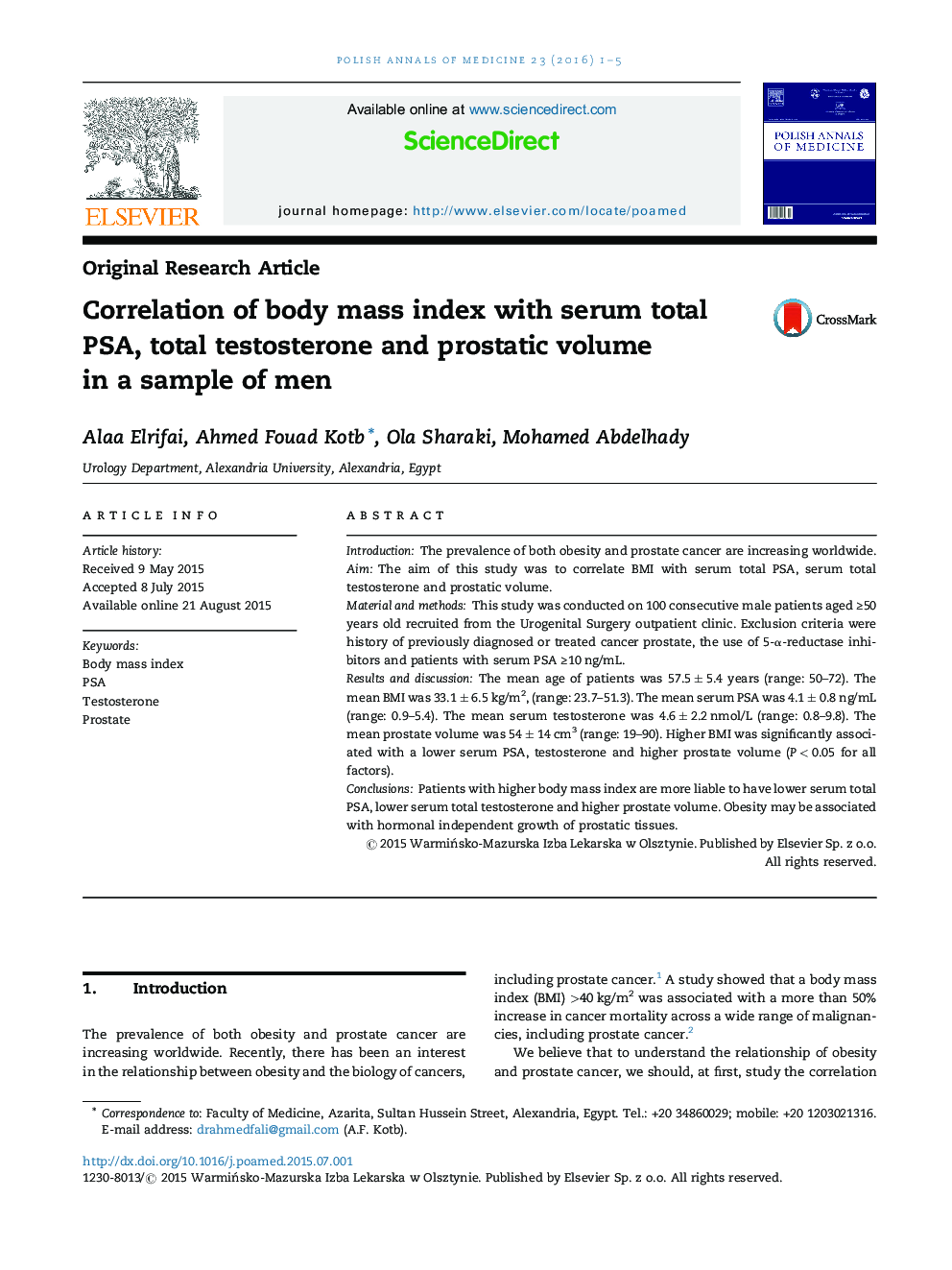| Article ID | Journal | Published Year | Pages | File Type |
|---|---|---|---|---|
| 2678593 | Polish Annals of Medicine | 2016 | 5 Pages |
IntroductionThe prevalence of both obesity and prostate cancer are increasing worldwide.AimThe aim of this study was to correlate BMI with serum total PSA, serum total testosterone and prostatic volume.Material and methodsThis study was conducted on 100 consecutive male patients aged ≥50 years old recruited from the Urogenital Surgery outpatient clinic. Exclusion criteria were history of previously diagnosed or treated cancer prostate, the use of 5-α-reductase inhibitors and patients with serum PSA ≥10 ng/mL.Results and discussionThe mean age of patients was 57.5 ± 5.4 years (range: 50–72). The mean BMI was 33.1 ± 6.5 kg/m2, (range: 23.7–51.3). The mean serum PSA was 4.1 ± 0.8 ng/mL (range: 0.9–5.4). The mean serum testosterone was 4.6 ± 2.2 nmol/L (range: 0.8–9.8). The mean prostate volume was 54 ± 14 cm3 (range: 19–90). Higher BMI was significantly associated with a lower serum PSA, testosterone and higher prostate volume (P < 0.05 for all factors).ConclusionsPatients with higher body mass index are more liable to have lower serum total PSA, lower serum total testosterone and higher prostate volume. Obesity may be associated with hormonal independent growth of prostatic tissues.
